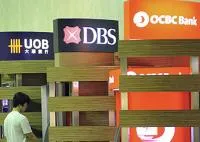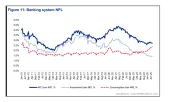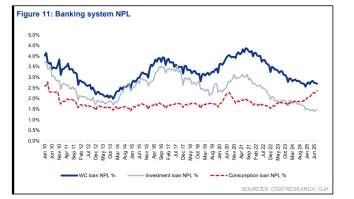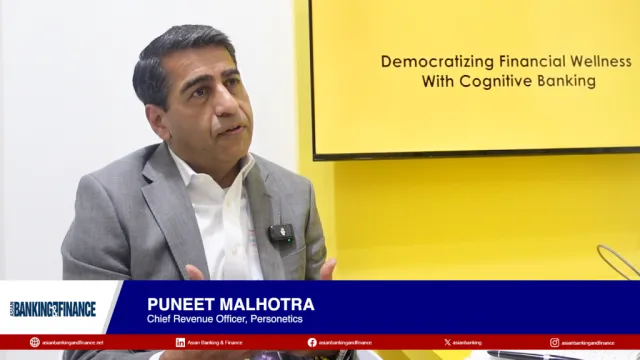
Singapore banks must be thankful for these loans
They pushed October loan growth to 13%.
According to Nomura, October loan growth was 13% y-y and 8% YTD (up from 9.7% y-y in Sept, +1% m-m), led by financial services-related loans (+12.9% y-y, +1.8% m-m) and building and construction loans (+18% y-y, +1.2% m-m).
Here's more from Nomura:
Manufacturing and general commerce segments were flattish m-m. Overall, loans to businesses grew by 11% y-y (Sept: 8%), up 0.7% m-m.
Housing and bridging loans, c.31% of system loans, were steady at +15% y-y or up 1.4% m-m. Total consumer loan growth was 17%, or +1.5% m-m.
Loan limit utilization was stable at 57%, while net NPL ratio for the system was 0.5% for 3Q12.
System deposits grew by 6% y-y in October, similar to Sept levels, with deposits from Singapore residents growing at a faster pace (+7% y-y) versus non-residents at 4%y-y.
The yield curve flattened in Sept-Nov, with the 10-year govt bonds losing 17bps, while the shorter three-month interbank was stable, suggesting NIMs will be under pressure.
Headline CPI moderated to 4.0% y-y in Oct (Sept: 4.7%), largely on account of the lower increase in transportation inflation and housing cost.
Core inflation, an important determinant of MAS’s monetary policy, also moderated to 2.2% y-y (from 2.4%). According to Nomura Economics Research, MAS expects inflation to remain a concern in spite of a weak 3Q GDP print. As such, we do not expect MAS to move to a more growth-supportive policy action.
Singapore banks’ current year earnings growth will be supported by undershooting credit cost and resilient fee income growth, in our view.
We believe that our top pick DBS (Buy, TP: SGD18.9) is attractive due to its broad franchise momentum and overly discounted (c.1x book) valuation to peers and offers an optionality on China. We believe that UOB’s solid capital and liquidity (especially USD) should reinforce its defensive attraction.



















 Advertise
Advertise






